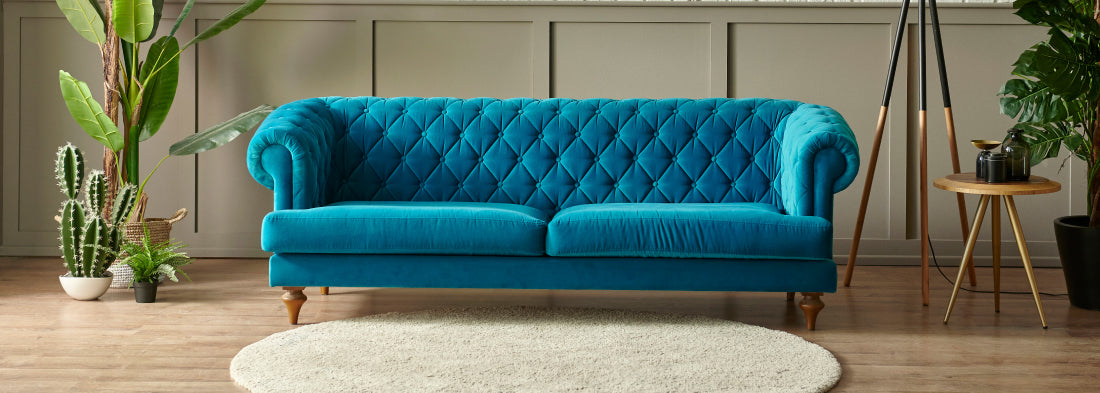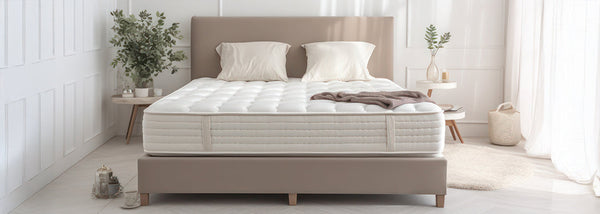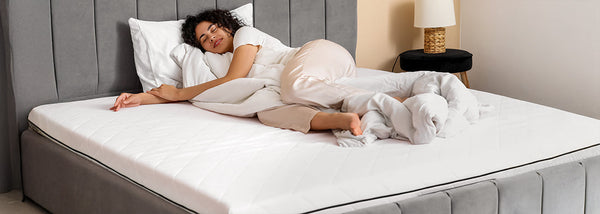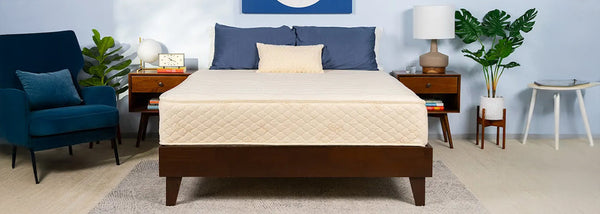Which Sofa Material is Best for Hot Weather?

When it comes to choosing furniture for a home in a hot and humid climate, comfort and breathability become non-negotiable. In tropical regions or during peak summer months, the materials used in your sofa upholstery can make a significant difference in how cool, fresh, and comfortable your living space feels. The heat-retention properties of certain fabrics and finishes can either enhance your daily comfort or make lounging on the sofa a frustrating experience. In homes without consistent air conditioning or in rooms that receive high exposure to sunlight, the effect of your sofa’s material becomes even more pronounced.
The right choice of material ensures you won’t feel sticky or overheated every time you sit down to relax. It also plays a vital role in maintaining hygiene and reducing moisture build-up, which can otherwise lead to mold, odor, or fabric degradation over time. For those looking to make the most of their investment, opting for seasonally appropriate upholstery is not just smart—it’s essential.
This comprehensive guide explores the pros and cons of popular materials, evaluates options like Leather vs Fabric Sofa for Heat, and offers insights into Cooling Sofa Fabrics, Cotton vs Velvet Sofa, and the importance of Breathable Upholstery for Sofas. Whether you're upgrading your current seating or shopping for a new set for your summer-ready living room, understanding these material nuances will help you make a cool, comfortable, and stylish choice.
Why Material Choice Matters in Hot Weather
Sofas serve as the centerpiece of most living rooms, and when the temperature rises, their material composition can make or break your comfort. Dense, non-breathable materials can trap heat, making the experience unpleasant, especially when combined with sweating or long seating durations. In climates where summer dominates the calendar, the discomfort caused by heat-retaining upholstery can quickly become a daily nuisance.
Breathable, lightweight materials allow for better airflow and moisture management, creating a cooler sitting environment even in rooms with minimal ventilation. Aside from comfort, the right material also influences hygiene—fabrics that trap sweat and humidity can harbor bacteria, dust mites, and unpleasant odors over time, affecting both health and indoor air quality.
Leather vs Fabric Sofa for Heat
One of the most common debates among buyers is Leather vs Fabric Sofa for Heat. Leather, though elegant and easy to clean, is known for trapping body heat and becoming sticky during hot and humid weather. Sitting on a leather sofa after a long day outdoors can feel more like a sauna session, especially in homes without climate control or ceiling fans.
In contrast, fabric sofas generally offer better ventilation. Materials like cotton, linen, and blended weaves promote airflow and are much less likely to trap heat. These natural fibers are also more skin-friendly during warm weather, offering a soft, breathable surface that reduces perspiration.
When evaluating Leather vs Fabric Sofa for Heat, it’s essential to consider your location, the amount of direct sunlight your room receives, and whether air conditioning is used regularly. Leather might be suitable in cooler climates or for occasional use in temperature-controlled settings, but fabric proves to be more forgiving and comfortable in consistently hot environments.
Additionally, darker shades of leather tend to absorb more heat than lighter-colored fabric sofas, intensifying the warmth. For people living in climates that experience prolonged summers, the consensus leans heavily towards fabric as the preferred choice—not just for its breathability, but also for its ability to remain comfortable and inviting throughout the day.
Cooling Sofa Fabrics
If you’re prioritizing comfort in hot climates, exploring Cooling Sofa Fabrics is a must. Cooling fabrics are typically made of breathable, moisture-wicking materials that feel light against the skin. These fabrics are engineered to dissipate heat quickly and prevent the accumulation of sweat, making them ideal for long hours of lounging, especially in non-air-conditioned environments.
Cotton and linen are two standout choices among Cooling Sofa Fabrics. Not only do they offer a crisp and clean look, but they also facilitate better airflow, keeping your seating experience breezy and sweat-free. Their natural fibers are hypoallergenic and resistant to temperature fluctuations, offering consistent comfort throughout the day. Microfiber and certain polyester blends, when engineered for airflow, can also serve as decent alternatives. They tend to be more durable, easy to clean, and resistant to stains, which makes them ideal for families or pet owners.
Moreover, sofa brands that focus on breathable seating often include additional design elements such as loose-weave back cushions, strategically placed air channels, or perforated seating surfaces that enhance ventilation. These structural elements work in harmony with the cooling fabrics to elevate airflow efficiency. If you’re shopping specifically for Cooling Sofa Fabrics, make sure to inquire about the weave density and breathability rating. The tighter the weave, the more likely the fabric is to trap heat—whereas looser, natural weaves can provide the perfect solution for summer comfort.

Cotton vs Velvet Sofa
When comparing Cotton vs Velvet Sofa, both have their unique appeal, but they perform very differently in heat. Cotton is a natural fiber that is soft, breathable, and perfect for tropical or semi-arid conditions. It absorbs moisture without feeling damp and is easy to clean.
Velvet, on the other hand, is dense and luxurious but tends to retain heat. While it may be great for colder climates or air-conditioned environments, velvet sofas can feel heavy and warm during summer. The plush texture, while visually rich, lacks the breathability that cotton offers.
Homeowners in hot climates usually find that in the Cotton vs Velvet Sofa comparison, cotton comes out ahead for day-to-day comfort, especially in households with children or pets. The softness and cooling properties of cotton make it an ideal choice for functional, comfortable living spaces.
Breathable Upholstery for Sofas
Opting for Breathable Upholstery for Sofas is crucial in warm regions. Breathability not only contributes to comfort but also helps extend the lifespan of your furniture. Excessive heat and humidity can cause poor-quality upholstery to wear out, peel, or trap odors over time, especially in homes where airflow is limited or air conditioning is not used regularly.
Breathable Upholstery for Sofas includes materials that allow air to circulate through the fabric, reducing the buildup of heat and moisture. This circulation keeps the seating surface cooler and helps maintain a dry, fresh feel even after prolonged use. Cotton, linen, and performance fabrics designed for airflow are excellent options, offering both comfort and durability. It's also worth considering sofas with removable covers, which add a layer of hygiene and versatility by making cleaning easier and allowing seasonal fabric swaps.
Good Breathable Upholstery for Sofas promotes a healthier indoor climate by minimizing sweat accumulation, reducing odor retention, and inhibiting the growth of allergens like dust mites and mold. For households in hot and humid regions, this is a vital consideration. It also makes the sofa more inviting for everyday use, ensuring it remains a cool retreat during the harshest summer days and a reliable seating option year-round.
Leather vs Fabric Sofa for Heat (Revisited)
Revisiting the conversation around Leather vs Fabric Sofa for Heat, it becomes clear that leather might be best reserved for controlled environments where temperature and humidity are consistent. Fabric, especially natural and cooling varieties, proves to be more adaptive and user-friendly in warm conditions.
Consumers often find that in everyday use, fabric provides a more relaxing and breathable seating experience. It's not just about temperature regulation—fabric sofas also tend to be less slippery and more tactile, enhancing comfort. When balancing style and practicality in Leather vs Fabric Sofa for Heat, comfort in hot weather usually tips the scales in favor of fabric.
Cooling Sofa Fabrics in Modern Design
Today’s Cooling Sofa Fabrics come in a wide variety of colors, patterns, and textures, meaning you don’t have to sacrifice style for functionality. Whether it’s a sleek 1-Seater Sofa or a spacious L-Shape Sofa, cooling fabrics can be seamlessly integrated into any modern interior. This versatility allows homeowners to align their sofa choice not only with seasonal practicality but also with the aesthetic narrative of their space.
From earthy tones to vibrant pastels and neutral greys, Cooling Sofa Fabrics provide an adaptable canvas that complements minimalist, contemporary, or even eclectic design styles. These fabrics are also ideal for layering with breathable cushions, throws, and accessories that can further elevate comfort and visual appeal.
Innovation in Cooling Sofa Fabrics includes UV-resistant threads, anti-pilling finishes, and antibacterial treatments that add to the longevity of your furniture. These enhancements not only protect the upholstery from fading and wear but also contribute to maintaining a fresher and more hygienic seating area. High-tech cooling textiles now often incorporate quick-dry technologies and enhanced moisture dispersion features, offering a sophisticated solution for heat-prone households.
These modern upgrades make cooling fabrics a no-compromise solution for comfort, aesthetics, and durability. With the ability to merge function with finesse, they prove that practical choices can also be effortlessly stylish.
Cotton vs Velvet Sofa: Final Thoughts
In the ongoing Cotton vs Velvet Sofa debate, cotton continues to dominate as the more seasonally adaptive material. While velvet does bring elegance and warmth, its insulating properties are better suited for colder regions or highly controlled interiors where air conditioning is constant and humidity is minimal. Velvet’s plush appeal, though inviting, can quickly become uncomfortable when temperatures rise, trapping body heat and resisting airflow.
Cotton’s lightweight feel, breathability, and resistance to heat make it a more sensible and sustainable choice for hot climates. Its ability to wick moisture and allow better airflow ensures that you remain comfortable even during extended lounging sessions. Additionally, cotton’s hypoallergenic nature and resistance to dust mites make it especially attractive for allergy-sensitive households. It’s also widely available, budget-friendly, and easy to maintain, which adds to its appeal for both aesthetic and functional needs.
For those seeking a refreshing and low-maintenance solution, the winner in Cotton vs Velvet Sofa is almost always cotton. It’s not only the better option for everyday comfort but also the smarter long-term investment for anyone living in warm, humid, or tropical regions.
The Role of Breathable Upholstery for Sofas in Long-Term Comfort
Breathable Upholstery for Sofas does more than enhance short-term comfort; it contributes to the long-term performance of your furniture. Materials that allow air to pass through prevent internal heat buildup, discourage mold formation, and reduce the risk of allergens.
Whether you’re furnishing a cozy apartment or a sprawling villa, prioritizing Breathable Upholstery for Sofas ensures that your furniture remains inviting and healthy year-round. The initial investment in breathable materials pays off in maintenance ease, odor control, and enhanced durability.
Conclusion: Making the Coolest Choice
Choosing the right sofa material in hot weather is more than a style decision—it’s a lifestyle upgrade. As we’ve explored through the lens of Leather vs Fabric Sofa for Heat, Cooling Sofa Fabrics, Cotton vs Velvet Sofa, and Breathable Upholstery for Sofas, it’s clear that thoughtful selection goes a long way.
In warm climates, opt for lightweight, airy, and low-maintenance materials. Look for fabrics that not only feel good but also perform well in terms of airflow, moisture control, and longevity. Sofas designed with hot-weather considerations in mind often offer a significant upgrade in day-to-day comfort. Not only do they enhance your physical experience, but they also support a fresher, more inviting living environment, especially in households without central air conditioning.
When combined with smart design elements—such as open frames, breathable cushion fills, and easy-care covers—your fabric choice can transform a stuffy room into a breezy haven. With brands like Duroflex offering an extensive range of sofas crafted for Indian conditions—from 2-Seater Sofas to 3-Seater Sofas—you’re never short of options that strike the perfect balance between style and seasonal comfort. These options ensure that your living space doesn’t just look elegant, but feels refreshingly livable too.
Make the cooler, smarter choice today—your summer self will thank you.







